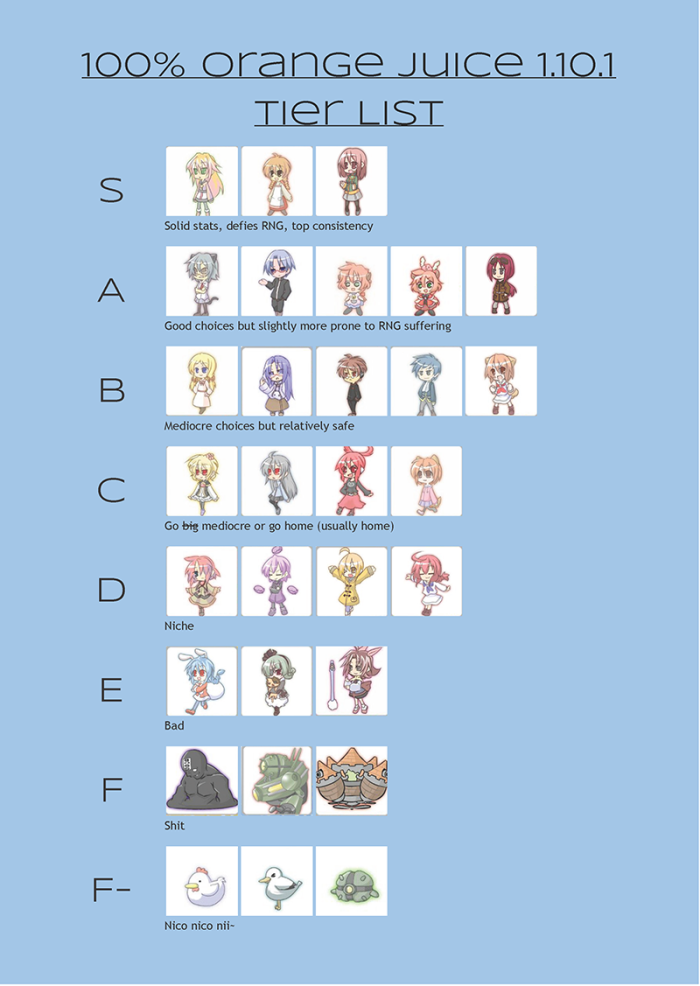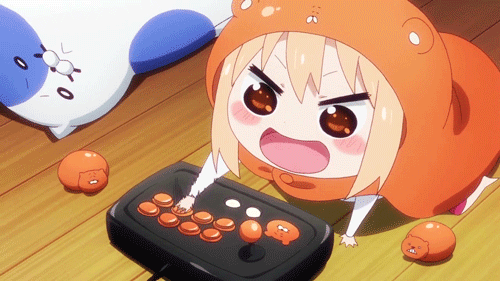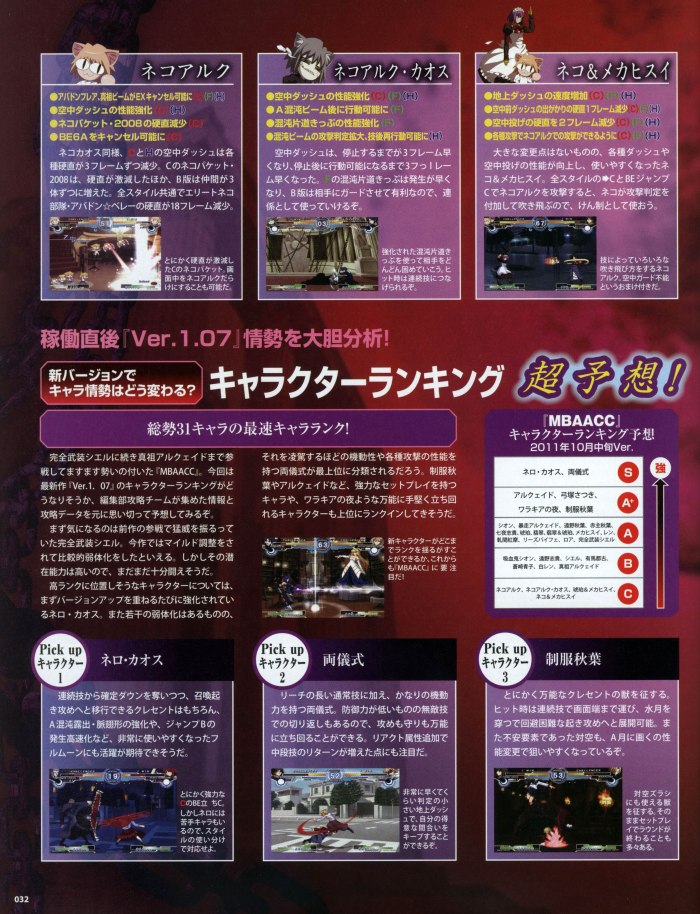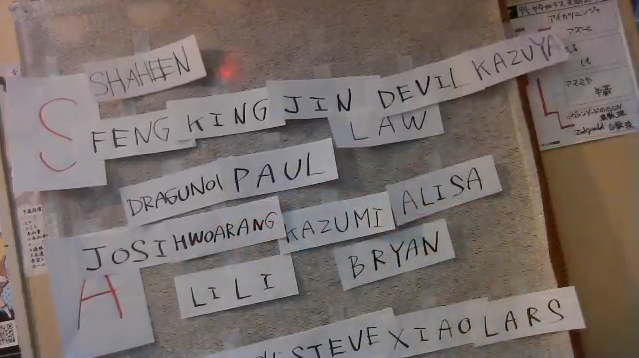The term “tier list” is rather prevalent in the video game community, and rightly so. Entitled faggots like myself seem to feel obligated to rank elements of a category within certain games above others, and share their “contribution” with the rest of the playerbase, despite not knowing anything about the game in question. Needless to say, it’s quite the polarizing topic, and each player holds one of numerous opinions in regards to the matter. Today, I’ll be telling you why they’re all wrong.

“So Blank,” you squeak excitedly as you begin unzipping your trousers, “what is the common belief that everyone holds that you’re going to whine about this time?”
Never fear. At some point in this “conversation”, you’re going to say “yes, Blank, it must surely be so!”
Firstly, we should set the foundation. Fighting games are the most common source of tier lists, and they are universally known yet simple enough to draw examples from, so I’ll be referring back to them a lot. I’m sure you don’t need me to spell this out for you, but fighting game tier lists are generally rankings of the playable characters. Of course, this blog post is intended to encompass tier lists in general; try to keep that in mind as you go through.
Anyway, back to the topic at hand. Most players (of any game) are of the belief that tier lists are meaningless. Countless arguments (excuses) are put forth, using words that have lost their meaning like “situational”, without a shred of evidence to support their claims. However, when a tier list is brought up and the mouthbreather’s favourite character isn’t at the top, rest assured he will tell you “but I won with X! S/he can’t be low tier!” In these cases, it’s considered self-defense to toss them off a roof, so it’s perfectly legal and highly recommended if you value your sanity.

Anecdotal evidence is never reliable, and isn’t considered scientifically valid. This applies even more so when dealing with tier lists of fighting games, as there are myriad factors in play at each moment – player skill, condition, fatigue, alertness, platform state – with character tier only being one of them. Matches are not reproducible in the slightest, and the outcome is affected by a plethora of uncontrolled variables, making the results of said matches useless in debunking the credibility of tier lists.
In tandem with this, the creation of tier lists also has no relationship with the outcome of games. Simply topping tournaments with a certain character won’t place that character in a higher tier, regardless of what you may believe. Tier lists are put together independently of individual wins and losses – they are brought about by a keen eye and a sharp mind; i.e. through analysis. Let’s take a look at an example – something you tier list censurers don’t seem to be capable of providing.
We’ll use the fictitious fighting game “Nekket” for this example. Our buttmad scapegoat wishes to argue that all Nekket characters are equally good, and the tier list that several professionals have spent hours perfecting through scrutiny and deduction is worthless, without any real supporting evidence. We’re tolerant and benevolent members of the community, though, so we humour him.

In Nekket, there’s a character called Nij. He has a number of moves, and each of them do a specific amount of damage and take the same amount of time to execute every time. Now take another character, Lived Nij. He’s a perfect carbon copy of Nij, except for one aspect: one of his moves does 1 more damage. It doesn’t take a genius to realize that Lived Nij is objectively the better character. Even if the move is slow, weak and overall useless, the fact of the matter is that the disparity remains. See, “it’s subjective” doesn’t apply here; you can’t hide behind “your opinion”. Lived Nij is better, fact.
This is exactly how every fighting game is. Characters will have different attributes, and some characters will be objectively better than others. You could argue that characters weak in one area make up for it in another, or that they perform better or worse under different circumstances, and you’d be totally right. However, all this does is minimize the power disparity, it doesn’t mean the characters are equal. “Power” (for lack of a better term) is an extremely abstract property that’s nigh upon impossible to measure, and we mere mortals can’t even hope to equalize it. In fact, the only way for characters in a fighting game to be truly equal is for them to be entirely homogeneous – but this doesn’t make for a very fun game.
In the end, we’re all human, and it’s impossible to perfectly balance a game such that every playable character is equally good if they don’t all do exactly the same thing. The result of this is a tier list. Professional players with revered game knowledge will look at the characters, analyze the differences and grace us with the conclusions they draw. Although they too are human, their lists are the best we’ve got to go by, and are justly held in high regard. They’re even published in magazines.

Now that you’ve realized the significance of tier lists, let me stop you before you run off and sign up for a tournament with that S-tier character you saw. Although they are meaningful, just how important are tier lists in the end? To answer in two words: not very.
First off, the creators of each tier list make some pretty huge assumptions. They assume that every character is being used by players of exactly the same skill level. Of course, in real life, this is never the case, and on almost all occasions, a difference in skill will trump a difference in tier. Furthermore, tier lists assume that the characters are played perfectly and to the best of their potential. Again, this is never the case in real life, and I can’t think of an example more applicable than the Mishima characters in Tekken. If you don’t play Tekken, you’ll just have to take my word for it; they’re amazing characters, but it’s essentially impossible to play them perfectly due to human mental and physical limitations, and I say this without jest. This is the reason they see surprisingly little tournament play despite constantly topping the tier lists.

In any case, for a game as glorious and well-balanced as Tekken, tier lists aren’t really significant in determining the outcome of a match. Although there’s a rather unanimous agreement on who the bottom tier characters are, it’s still definitely possible to find success with these characters. In fact, you could argue that using uncommon, low-tier characters could give you dark horse advantage, but that’s a whole new topic. In essence, the difference between tiers is so small that it’s almost insignificant, so the tier lists as a whole become somewhat questionable.
Practicing a low tier character will generally give you an advantage over someone who simply picks from the top of a tier list and does not practice. This applies to pretty much every game. But what if the other guy practices just as much as you do? Then, again, he will have the objective advantage, but it’s definitely not something that can’t be overcome in the midst of the chaos of a match. Unless it’s Akuma in Super Street Fighter 2 Turbo.
So, what can we glean from all of this? Tier lists are definitely valid and informative, but they are by no means the be all, end all factor in deciding the outcome of a match. Always take them with a pinch of salt, and decide for yourself whether you’re looking at the tier list of Tekken 7 or Super Turbo.
[10:09] <Blankaex> lolbriefcase
[10:09] <Blankaex> what do you think of tier lists
[10:10] <lolbriefcase> people that reject them completely are retarded
[10:10] <lolbriefcase> people that follow them completely are retarded